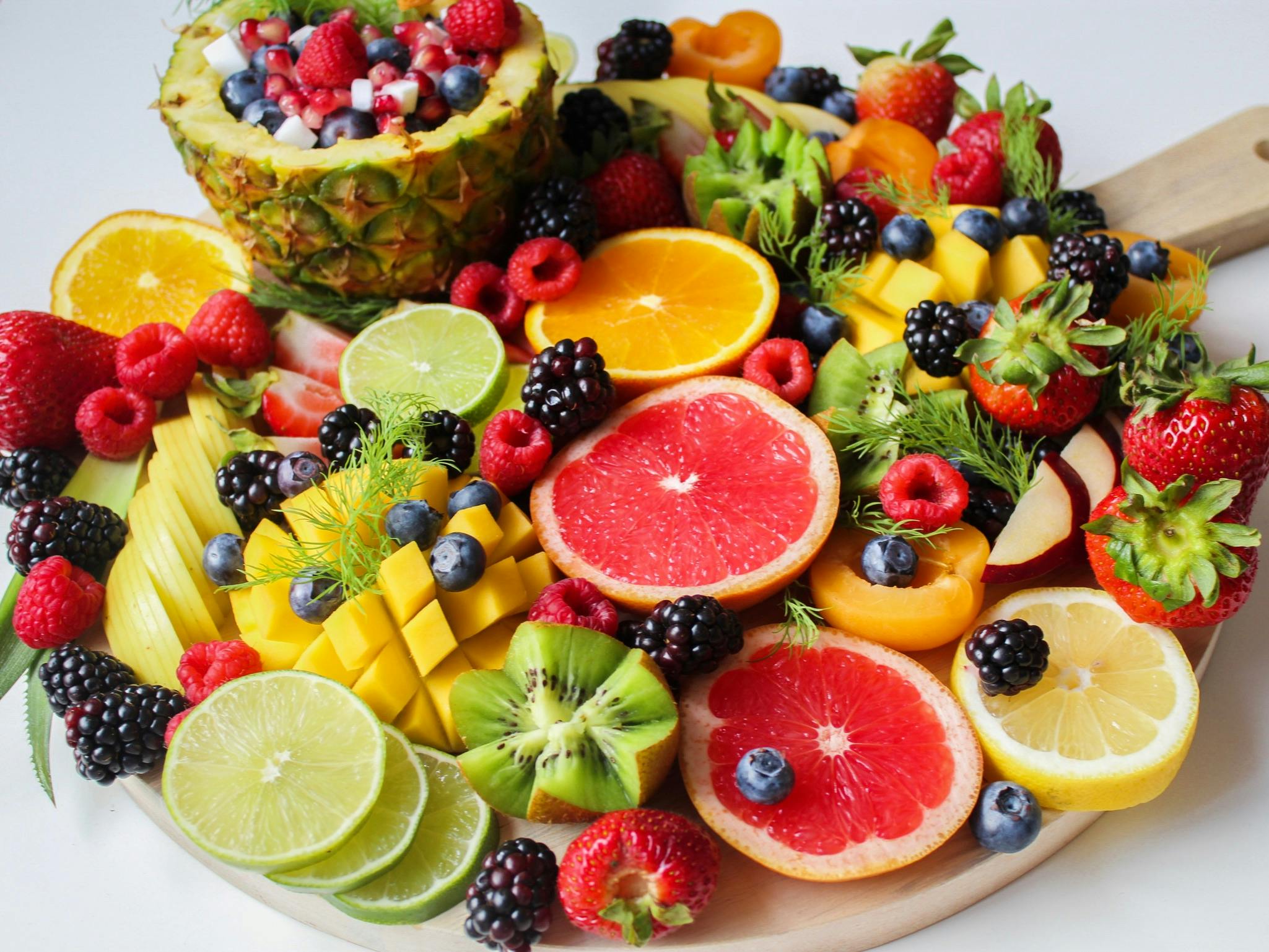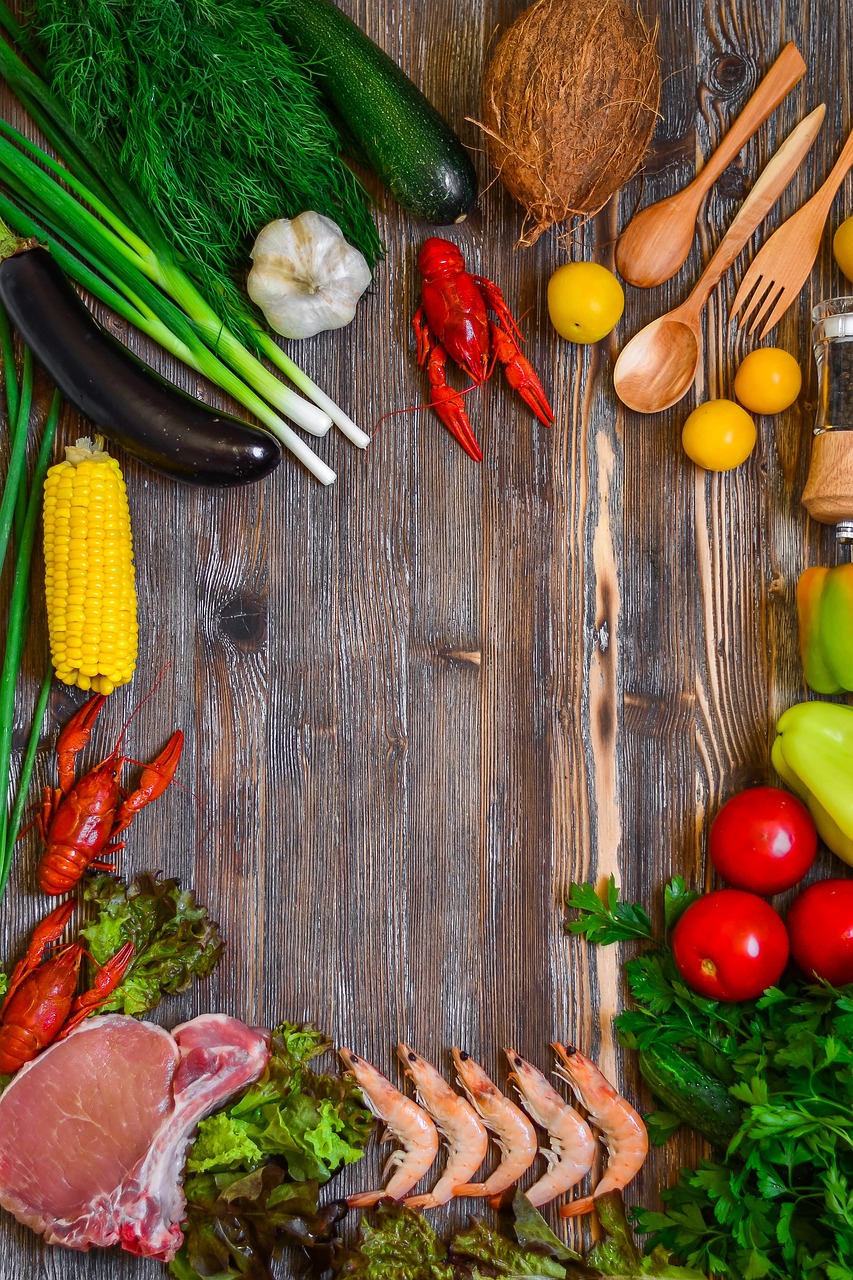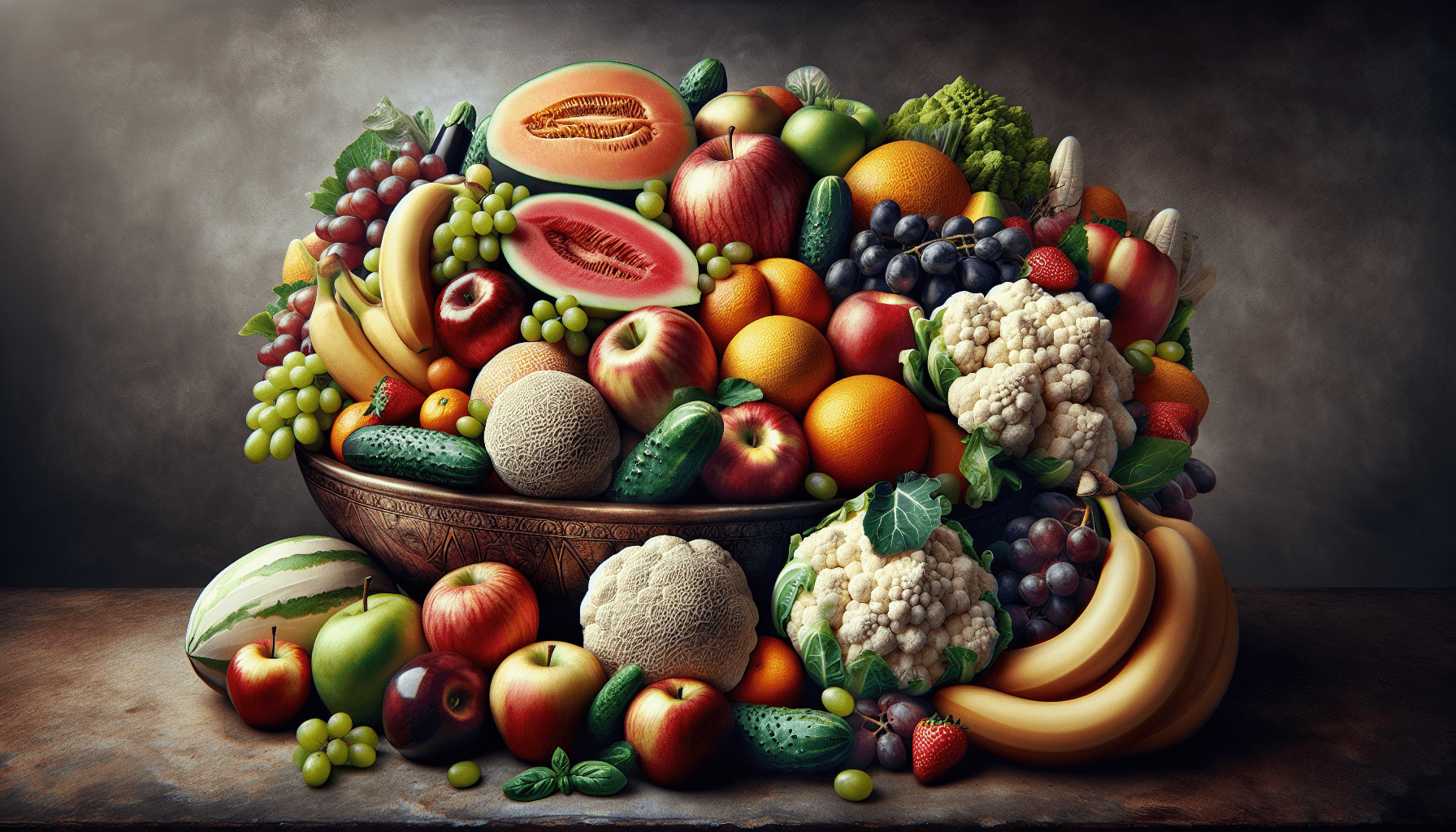What Is The Recommended Intake Of Fruits And Vegetables For Fitness?

Are you looking to lead a healthier lifestyle and get fit? One crucial aspect to consider is your intake of fruits and vegetables. But have you ever wondered what the recommended amount of these nutritious foods is? In this article, we will explore the ideal intake of fruits and vegetables for fitness enthusiasts like yourself. By understanding the recommended quantities, you can make better choices in your diet and optimize your fitness journey. So, let’s dive in and discover how these colorful and nutrient-packed goodies can contribute to your overall health and well-being!

Benefits of consuming fruits and vegetables
Eating a diet rich in fruits and vegetables offers numerous benefits for overall health and wellness. One of the key advantages is that they are packed with essential vitamins and minerals. Fruits and vegetables provide a wide range of nutrients such as vitamin C, vitamin A, potassium, and folate, which are vital for the proper functioning of the body. These vitamins and minerals play important roles in supporting immune function, maintaining healthy bones and teeth, and aiding in the production of energy. By incorporating fruits and vegetables into your daily diet, you can ensure that your body receives the necessary nutrients it needs to thrive.
Fruits and vegetables are also high in fiber, which is crucial for a healthy digestive system. Fiber helps prevent constipation, promotes regular bowel movements, and supports gut health. The fiber found in fruits and vegetables can also help control blood sugar levels, reduce the risk of heart disease, and contribute to weight management. By consuming an adequate amount of fiber from fruits and vegetables, you can achieve optimal digestive health and improve your overall well-being.
In addition to being rich in vitamins and minerals and high in fiber, fruits and vegetables are low in calories and fat. These nutrient-dense foods can be included in a well-balanced diet without causing excessive weight gain. The low calorie and fat content of fruits and vegetables make them a great choice for anyone looking to maintain a healthy weight or lose weight. By filling your plate with colorful fruits and vegetables, you can satisfy your hunger while keeping calorie and fat intake in check.
Recommended daily intake for fruits
The recommended daily intake of fruits varies based on factors such as age and gender. According to the United States Department of Agriculture (USDA) guidelines, the following are the general recommendations for fruit consumption:
- Children aged 2-3: 1 cup of fruit
- Children aged 4-8: 1½ cups of fruit
- Girls aged 9-13: 1½ cups of fruit
- Boys aged 9-13: 1½ cups of fruit
- Girls aged 14-18: 1½ cups of fruit
- Boys aged 14-18: 2 cups of fruit
- Women aged 19-30: 2 cups of fruit
- Men aged 19-50: 2 cups of fruit
- Women aged 31 and older: 1½ cups of fruit
- Men aged 51 and older: 2 cups of fruit
It’s important to note that these are general guidelines and individual needs may vary. It’s recommended to consult with a healthcare professional or registered dietitian for personalized recommendations based on your specific circumstances.
In terms of serving sizes, different fruits have different recommendations. For example, a medium-sized apple or banana is equivalent to one cup of fruit, while half a cup of dried fruit or one large orange also counts as one cup. It’s important to include a variety of fruits in your diet to ensure a diverse intake of nutrients.
Variety and diversity in fruit consumption
Variety and diversity in fruit consumption is essential to gain a wide range of nutrients. Different fruits offer unique combinations of vitamins, minerals, and antioxidants that support overall health. It’s recommended to include various types of fruits in your diet, such as berries, citrus fruits, tropical fruits, and stone fruits. By incorporating fruits of different colors, you can also benefit from a diverse blend of phytonutrients, which are naturally occurring compounds that have been associated with numerous health benefits.
Including fruits in your diet not only adds nutritional value, but it also enhances the taste and enjoyment of meals and snacks. Experimenting with different fruits and trying new recipes can be a fun and exciting way to incorporate variety into your fruit consumption.
Recommended daily intake for vegetables
Similar to fruits, the recommended daily intake of vegetables varies based on age and gender. The USDA provides general guidelines as follows:
- Children aged 2-3: 1 cup of vegetables
- Children aged 4-8: 1½ cups of vegetables
- Girls aged 9-13: 2½ cups of vegetables
- Boys aged 9-13: 2½ cups of vegetables
- Girls aged 14-18: 2½ cups of vegetables
- Boys aged 14-18: 3 cups of vegetables
- Women aged 19-30: 2½ cups of vegetables
- Men aged 19-50: 3 cups of vegetables
- Women aged 31 and older: 2½ cups of vegetables
- Men aged 51 and older: 2½ cups of vegetables
As with fruits, it’s important to keep in mind that these are general guidelines and individual needs may vary. Consulting with a healthcare professional or registered dietitian can provide personalized recommendations for your specific needs.
The serving sizes for different vegetables can vary. For example, one cup of raw leafy vegetables, such as spinach or lettuce, is equivalent to one cup of vegetables. Additionally, half a cup of cooked vegetables or one medium-sized vegetable, such as a potato or carrot, also counts as one cup. Including a variety of vegetables in your diet can ensure a diverse intake of essential nutrients.

Variety and diversity in vegetable consumption
Similar to fruits, variety and diversity in vegetable consumption are important for obtaining a wide range of nutrients. Different vegetables offer distinct nutritional profiles, and consuming a variety of vegetables can contribute to overall health and wellness. It’s recommended to incorporate vegetables from various subgroups, such as dark green, red and orange, legumes, starchy, and other vegetables, to obtain a diverse array of vitamins, minerals, and antioxidants.
Incorporating a mix of raw and cooked vegetables can also provide different textures and flavors, making meals more enjoyable. Experimenting with different cooking methods, such as roasting, steaming, or sautéing, can add variety and enhance the taste of vegetables. Including vegetables in your favorite dishes, such as salads, soups, stir-fries, and pasta sauces, can make them more flavorful and nutritious.
Importance of fruits and vegetables for fitness
Fruits and vegetables play a crucial role in fitness due to their ability to fuel the body with essential nutrients. When engaging in physical activity, the body requires a steady supply of energy to perform optimally. Consuming a diet rich in fruits and vegetables can provide the necessary carbohydrates, vitamins, and minerals needed to sustain energy levels during exercise.
Fruits and vegetables are particularly beneficial for enhancing exercise performance. The natural sugars found in fruits, such as fructose, provide a quick source of energy, making them an ideal choice for pre-workout fuel. Additionally, the vitamins and minerals present in fruits and vegetables, like vitamin C and potassium, contribute to muscle function and hydration, respectively, which can enhance overall athletic performance.
Furthermore, consuming fruits and vegetables after workouts is important for promoting muscle recovery and growth. Physical activity causes muscle damage, and the nutrients in fruits and vegetables, such as antioxidants and amino acids, aid in repairing and rebuilding muscles. Additionally, the high water content of fruits and vegetables aids in rehydration, helping to restore fluid balance within the body.
Incorporating fruits and vegetables into a fitness diet is also essential for weight management. Fruits and vegetables are low in calories and fat, while high in fiber, which promotes feelings of fullness and satiety. By including these nutrient-dense foods in your diet, you can maintain a healthy weight or achieve weight loss goals more effectively.
Another important aspect of fitness is maintaining a strong immune system. Fruits and vegetables are rich in antioxidants, vitamins, and minerals that help support immune function. The vitamins C and E, as well as zinc and beta-carotene found in fruits and vegetables, play vital roles in boosting the immune system and protecting against illness and infection.
Pre-workout and post-workout fruits and vegetables
Choosing the right fruits and vegetables for pre-workout and post-workout nutrition can further enhance your fitness routine.
For pre-workout energy, fruits that are easily digestible and provide a quick source of carbohydrates are ideal. Bananas, for example, are an excellent choice as they are rich in potassium, which supports muscle function and prevents cramping. Other options include berries, which are packed with antioxidants, and oranges, which provide vitamin C for immune support.
For post-workout recovery, vegetables that are rich in potassium, magnesium, and antioxidants can aid in muscle repair and reduce inflammation. Leafy greens such as spinach and kale are excellent choices as they are high in vitamins and minerals. Additionally, sweet potatoes and beets provide carbohydrates and are rich in antioxidants, making them beneficial for post-workout recovery.
Incorporating fruits and vegetables into a fitness diet
Incorporating fruits and vegetables into a fitness diet can be done in a variety of ways. Meal planning and preparation are essential for ensuring that you have a sufficient supply of fruits and vegetables on hand. By planning your meals in advance and incorporating a diverse array of fruits and vegetables, you can ensure that you are meeting the recommended daily intakes.
Beyond main meals, including fruits and vegetables in snacks is a simple and effective way to increase your intake. Pack portable snacks such as baby carrots, cherry tomatoes, or sliced fruit to enjoy throughout the day. Having these healthy options readily available can prevent you from reaching for less nutritious snacks.
Smoothies and juices are also convenient options for incorporating fruits and vegetables into your diet. They provide a quick and refreshing way to consume a variety of fruits and vegetables in one sitting. By blending together a combination of your favorite fruits and vegetables, you can create a nutrient-packed beverage that is both delicious and satisfying.
Getting creative with recipes and cooking methods is another way to incorporate fruits and vegetables into your fitness diet. Adding fruits to salads, yogurt, or oatmeal can bring a burst of flavor and color. Creating vegetable-filled stir-fries, soups, or roasted vegetable medleys can provide a nourishing and satisfying meal. Exploring different culinary techniques and experimenting with new flavors can make consuming fruits and vegetables an enjoyable and sustainable part of your fitness journey.

Challenges and solutions for consuming enough fruits and vegetables
While consuming enough fruits and vegetables is important, there can be challenges that make it difficult to meet the recommended daily intakes.
One common challenge is access to fresh produce, particularly for those living in areas with limited availability or high costs of fruits and vegetables. However, there are solutions to overcome this challenge. Exploring local farmers markets or community-supported agriculture (CSA) programs can provide access to fresh and locally sourced produce. Additionally, frozen or canned fruits and vegetables can be an affordable and convenient alternative when fresh options are scarce.
Time constraints can also be a barrier to consuming enough fruits and vegetables. However, with proper planning and meal preparation, time constraints can be addressed. Setting aside time each week to plan meals and prepare fruits and vegetables can streamline the process and ensure that you have nutritious options readily available. Pre-cutting vegetables and portioning out fruits in advance can save time during busy days.
Taste preferences can also deter people from consuming enough fruits and vegetables. However, taste preferences can be overcome by experimenting with different cooking methods, seasonings, and combinations of fruits and vegetables. Trying new recipes and incorporating fruits and vegetables into dishes that you already enjoy can help make them more palatable.
Lastly, food budget considerations can hinder the consumption of fruits and vegetables. While fresh produce can be expensive, there are cost-effective strategies. Buying fruits and vegetables in season can lower costs, and opting for frozen or canned options can be more budget-friendly. Additionally, growing your own fruits and vegetables, even in small spaces such as balconies or windowsills, can provide a sustainable and economical solution.
Supplements as a complement to fruit and vegetable intake
In some circumstances, supplements can be considered as a complement to fruit and vegetable intake. While it is always best to obtain nutrients through whole foods, certain individuals may have difficulty meeting their nutritional needs solely through diet.
Supplements can be particularly beneficial for individuals with specific dietary restrictions, medical conditions, or those with limited access to fresh produce. Consulting with a healthcare professional or registered dietitian can provide guidance on when and how to consider supplements, as well as recommended dosage amounts.
Various types of supplements are available, including multivitamins, individual nutrient supplements, and powdered fruit and vegetable extracts. When choosing supplements, it’s important to select reputable brands that undergo rigorous testing for quality and safety. It’s also crucial to remember that supplements are meant to complement a healthy diet, rather than replace it entirely.
Importance of organic and locally sourced fruits and vegetables
Opting for organic and locally sourced fruits and vegetables brings additional benefits to your health and the environment. Organic produce is grown without the use of synthetic pesticides, herbicides, or genetically modified organisms (GMOs). By choosing organic fruits and vegetables, you can minimize exposure to potentially harmful chemicals and support sustainable agricultural practices.
Locally sourced fruits and vegetables offer multiple advantages. They tend to be fresher and retain more nutrients since they are harvested closer to their peak ripeness. Additionally, buying locally supports small-scale farmers, reduces transportation emissions, and contributes to the local economy.
While organic and locally sourced fruits and vegetables may come at a slightly higher cost, the potential health and environmental benefits make them worthwhile options to consider.
Conclusion
Incorporating fruits and vegetables into your diet is crucial for maintaining optimal health and achieving fitness goals. Their rich nutrient content, high fiber content, and low calorie and fat content make them a valuable addition to any diet. By following the recommended daily intakes and focusing on variety and diversity, you can ensure that you are reaping the many benefits fruits and vegetables have to offer.
Whether you choose to include fruits and vegetables in meal planning, incorporate them into snacks, or explore creative recipes and cooking methods, finding enjoyable and sustainable ways to consume them is key. Overcoming challenges such as access, time constraints, taste preferences, and budget considerations can be achieved through planning, exploring different options, and seeking out local sources.
Consideration of organic and locally sourced options can further enhance the nutritional value and sustainability of your fruit and vegetable intake. And while supplements can serve as a complement to your diet, they should not replace whole foods entirely and should be taken under the guidance of healthcare professionals.
Making fruits and vegetables a priority in your fitness journey will not only contribute to a healthier you but will also support your overall well-being. With their array of benefits and the endless possibilities for incorporating them into your meals and snacks, fruits and vegetables are truly nature’s gift for a fit and healthy lifestyle.
